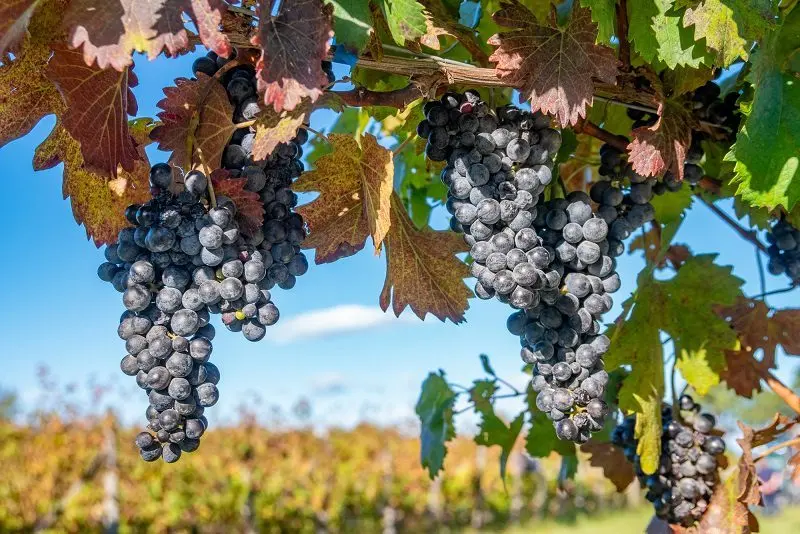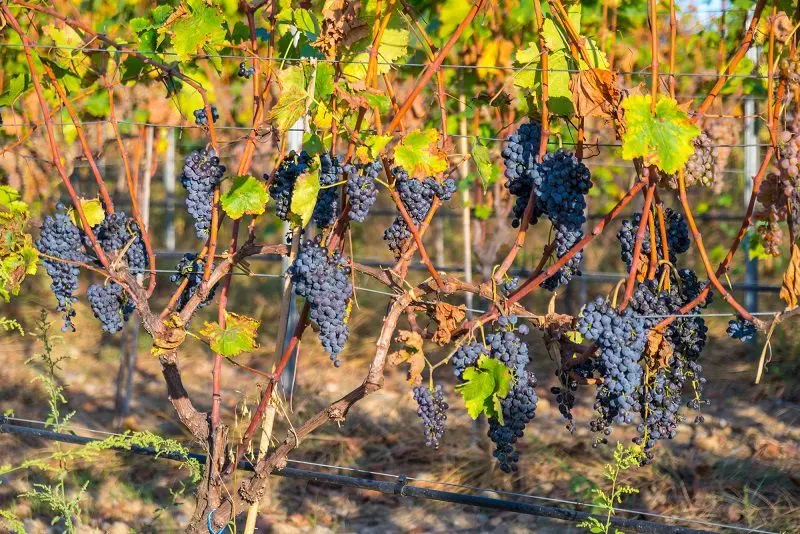Contents
Saperavi wine is the most popular and affordable alcoholic drink in Georgia. The fact is that unpretentious grapes of this variety grow literally throughout the country, and only a lazy winemaker does not use fragrant, juicy bunches in blends and single varieties. The classic variation of the wine should be dry and have a strength of 10-12%, however, semi-dry, semi-sweet and even dessert varieties can be found on the market. The fact is that “Saperavi” is not a name controlled by origin. In a broad sense, this means that any wine made from the grape of the same name, up to homemade, can bear such a name.
Features of the variety
Saperavi (the name is translated from Georgian as “paint” or “dyer”) is a red grape variety with large branched clusters, a direct descendant of the autochthonous Kakhetian variety cultivated as early as 5-6 millennium BC. A distinctive feature of the berries is the dark pink flesh, while in other red varieties, only the skin has pigment. The variety does not tolerate gray rot and easily “picks up” various diseases, but it is distinguished by increased frost resistance and takes root on almost any soil.

Saperavi is also planted in Moldova, Ukraine, Uzbekistan, Bulgaria, Armenia, Azerbaijan, some countries of the New World, Russia, but it is at home in Georgia that it is considered the “number 1 brand” and is part of the most famous wines (Kindzmarauli, Rkatsiteli, Alazani Valley etc.). Saperavi is often blended (mixed) with other varieties to give them tannins, persistence and astringency.
Northern Saperavi
Russian mutation of the Georgian variety, bred specifically for breeding at low temperatures. Connoisseurs say that this is also a very worthy option, but there is still no true southern depth of taste in it, since winemakers have not yet fully determined the potential of the variety and are only working on obtaining the “ideal” Saperavi Northern.

Wine characteristics
Georgian wine Saperavi is a pomegranate-red alcoholic drink with a strength of 10-12 degrees. The taste is thick, viscous, tart. The bouquet of Saperavi has tones of black currant, pomegranate, cherry, ripe blackberry and prunes. The more mature the wine, the more pronounced the flavor notes. Typically, the wine goes through an annual exposure, but can be stored up to 50 years, and reaches its peak of taste by about 12-15 years of maturation. The first official wine with this name appeared in 1886.

The coloring properties of Saperavi are so high that even after a couple of sips the taster’s tongue and teeth turn purple. Dark red wine practically does not change color even if it is diluted with water by almost half, unscrupulous suppliers and producers periodically use this.
Production technology
Traditionally, Saperavi wine is made using the famous Kakhetian method, when the pulp undergoes a fermentation process in qvevri jugs dug into the ground, but recently large enterprises are increasingly neglecting traditions and fermenting future wine in ordinary steel vats, after removing scallops, bones, twigs.
The sweetness of the future Saperavi is regulated by the degree of ripeness of the berries. For dry wine, they take slightly unripe grapes (harvested at the end of summer or at the very beginning of September, since the variety belongs to the middle late ones). If the output should be a dessert look, the clusters that are most filled with juice and sugar are selected.

Features of the drink:
- “Diversity”. Different producers can make completely dissimilar wines from the same portion of Saperavi berries harvested in the same vineyard. It depends on many factors: technology (Kakheti or modern), maturation, must fermentation time, barrel conditions, and so on.
- Extractivity – the variety produces a thick, rich in color and aroma wine.
How to drink Saperavi wine
Saperavi is served chilled to 13-15 degrees and poured into red wine glasses. The drink goes well with fatty dishes of Georgian cuisine, especially pilaf, lamb shish kebab, satsivi. It is believed that Saperavi is the best choice for a feast, as this wine successfully sets off the taste of food without drowning it out and without losing its own aroma.

The drink differs at the same time with excellent taste, pleasant bouquet without unnecessary subtleties, understandable only to a professional sommelier, and affordable price. This is a real Georgian “folk wine”.









